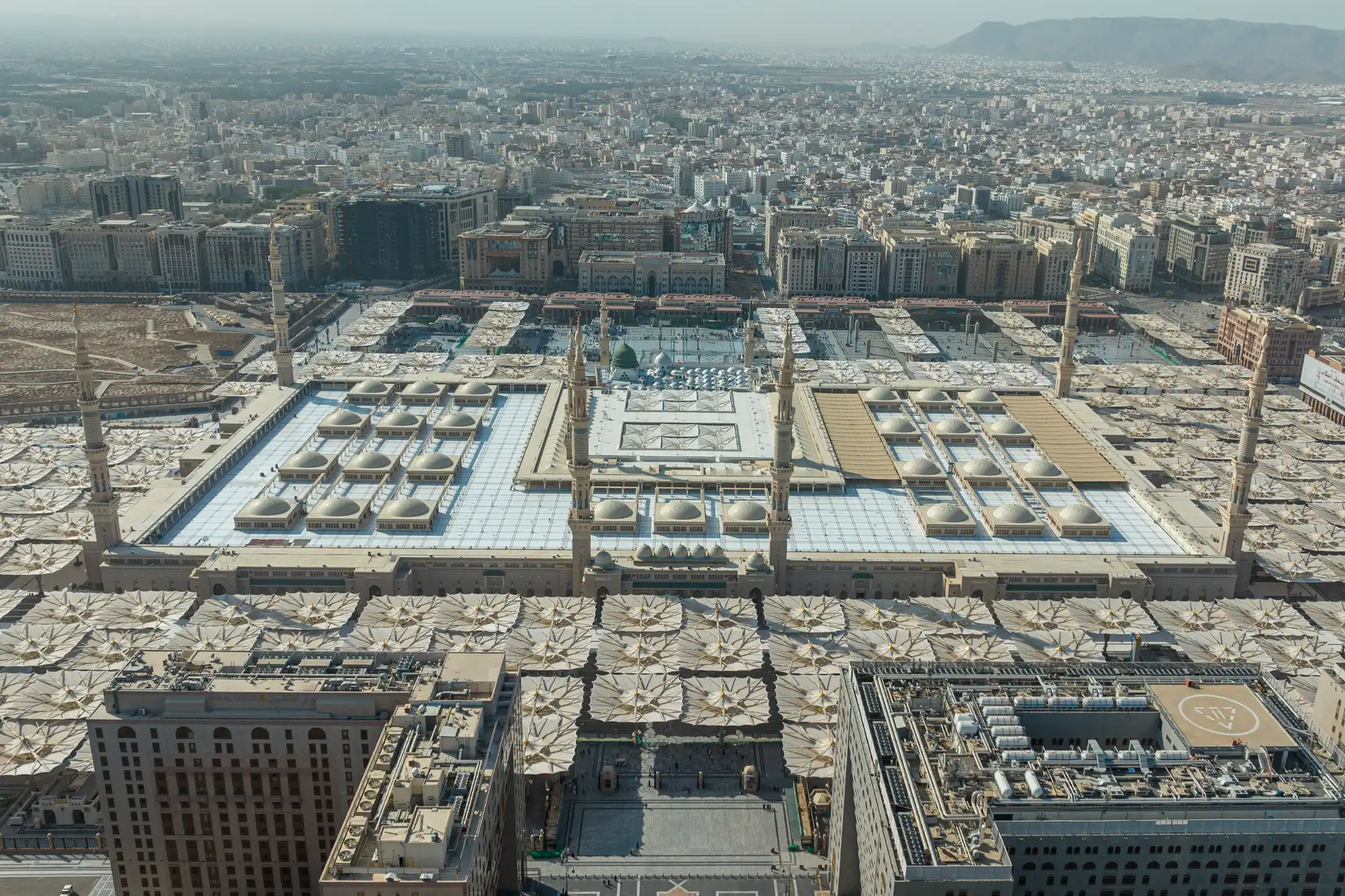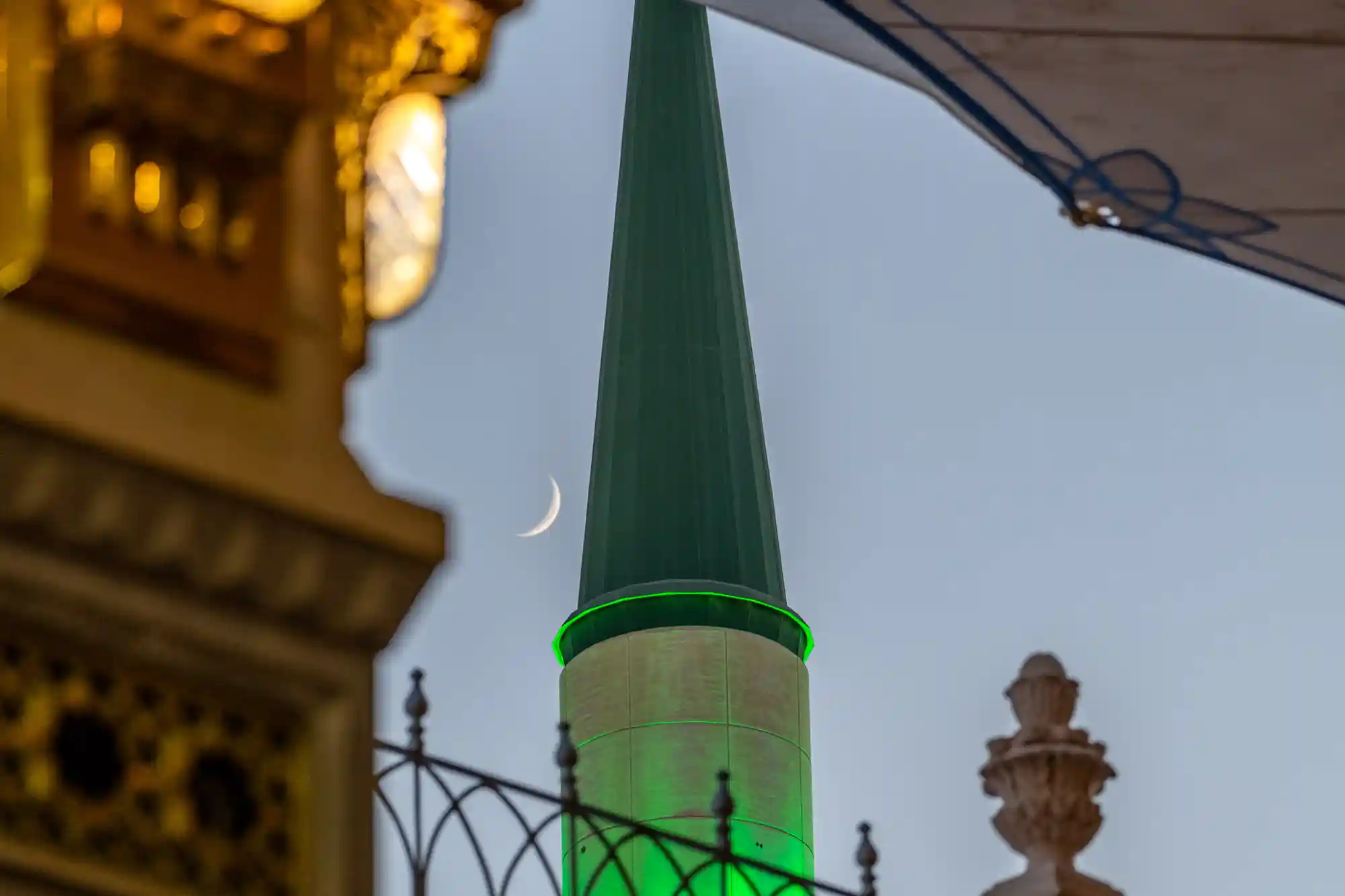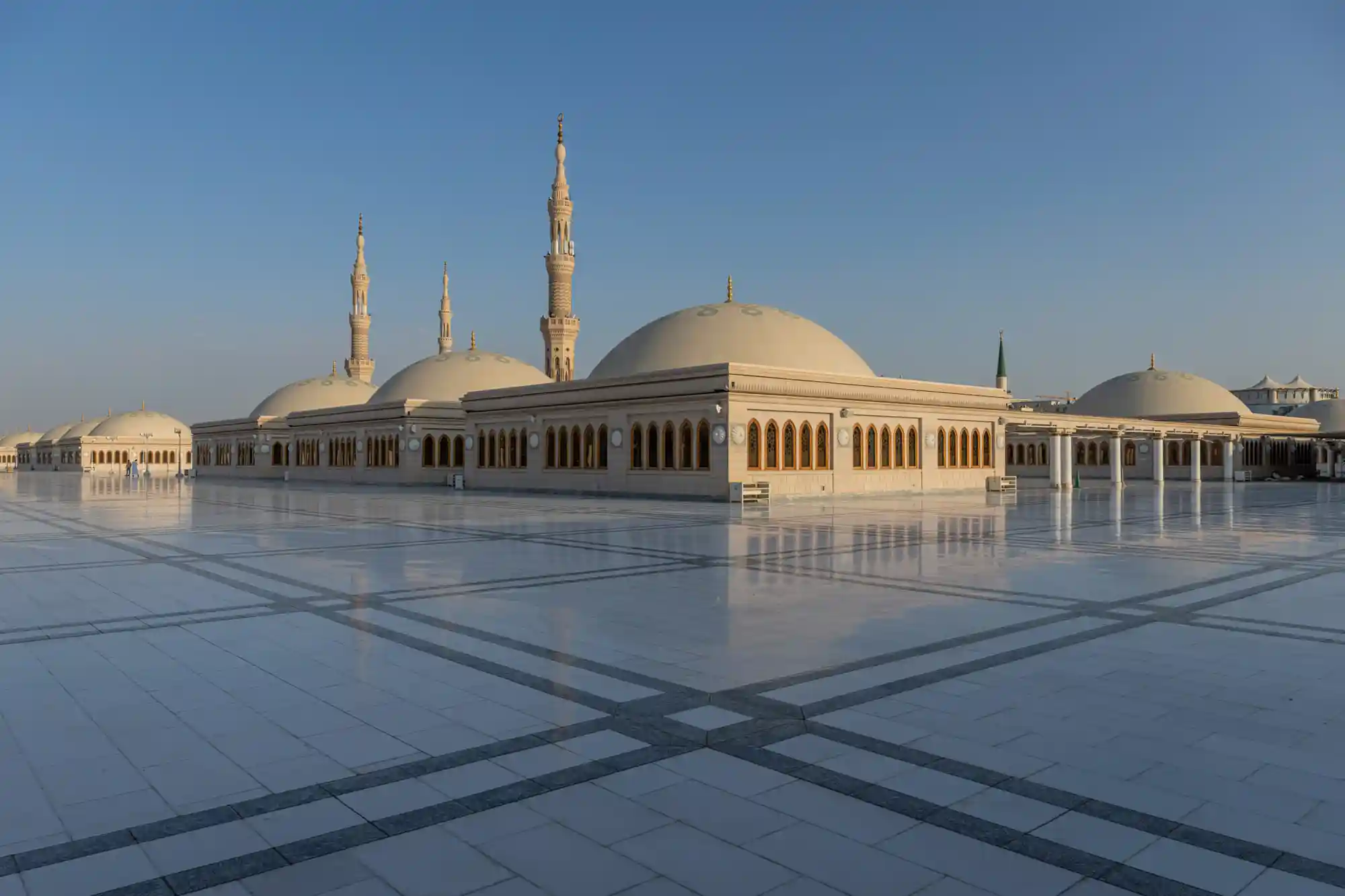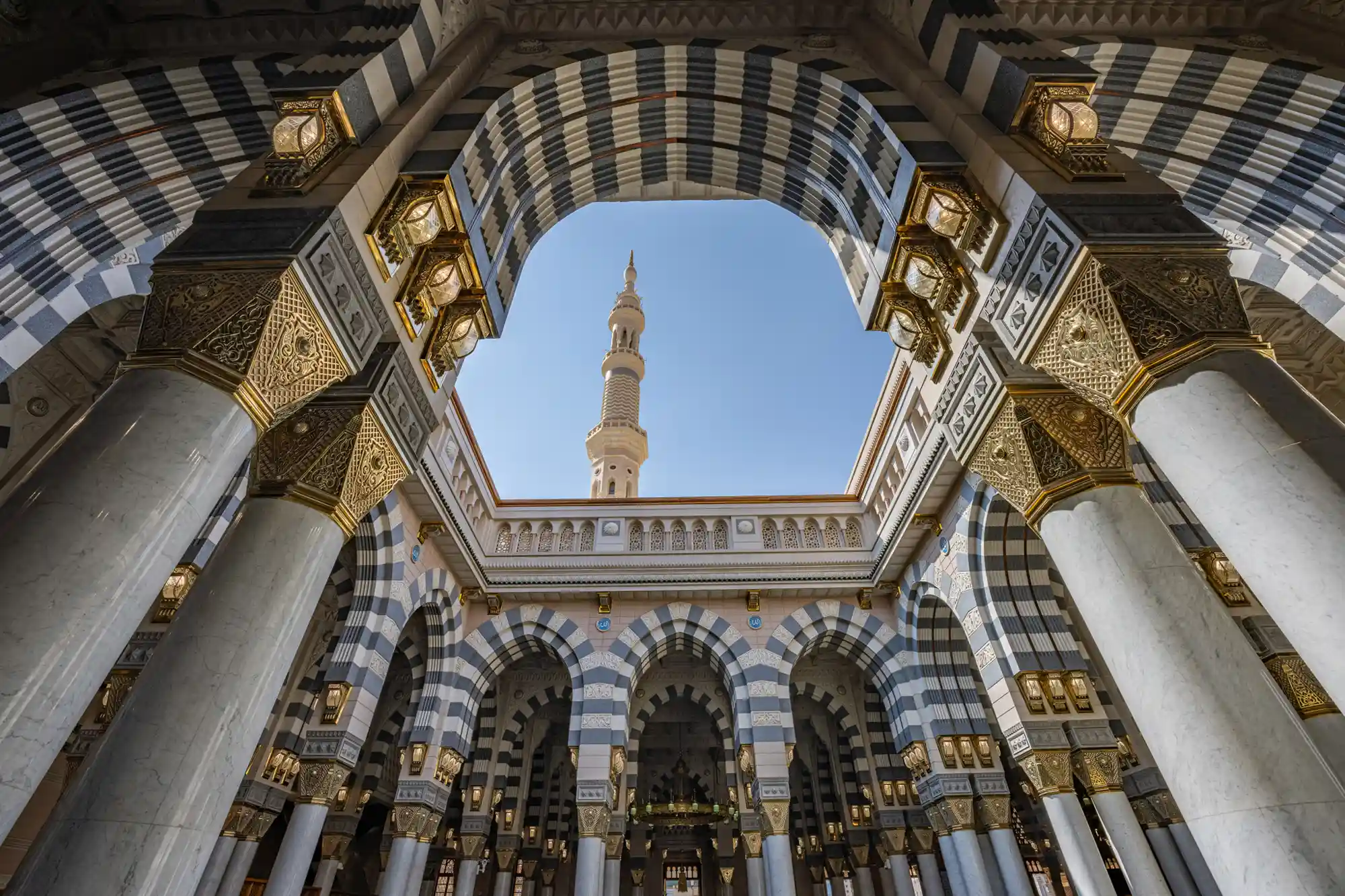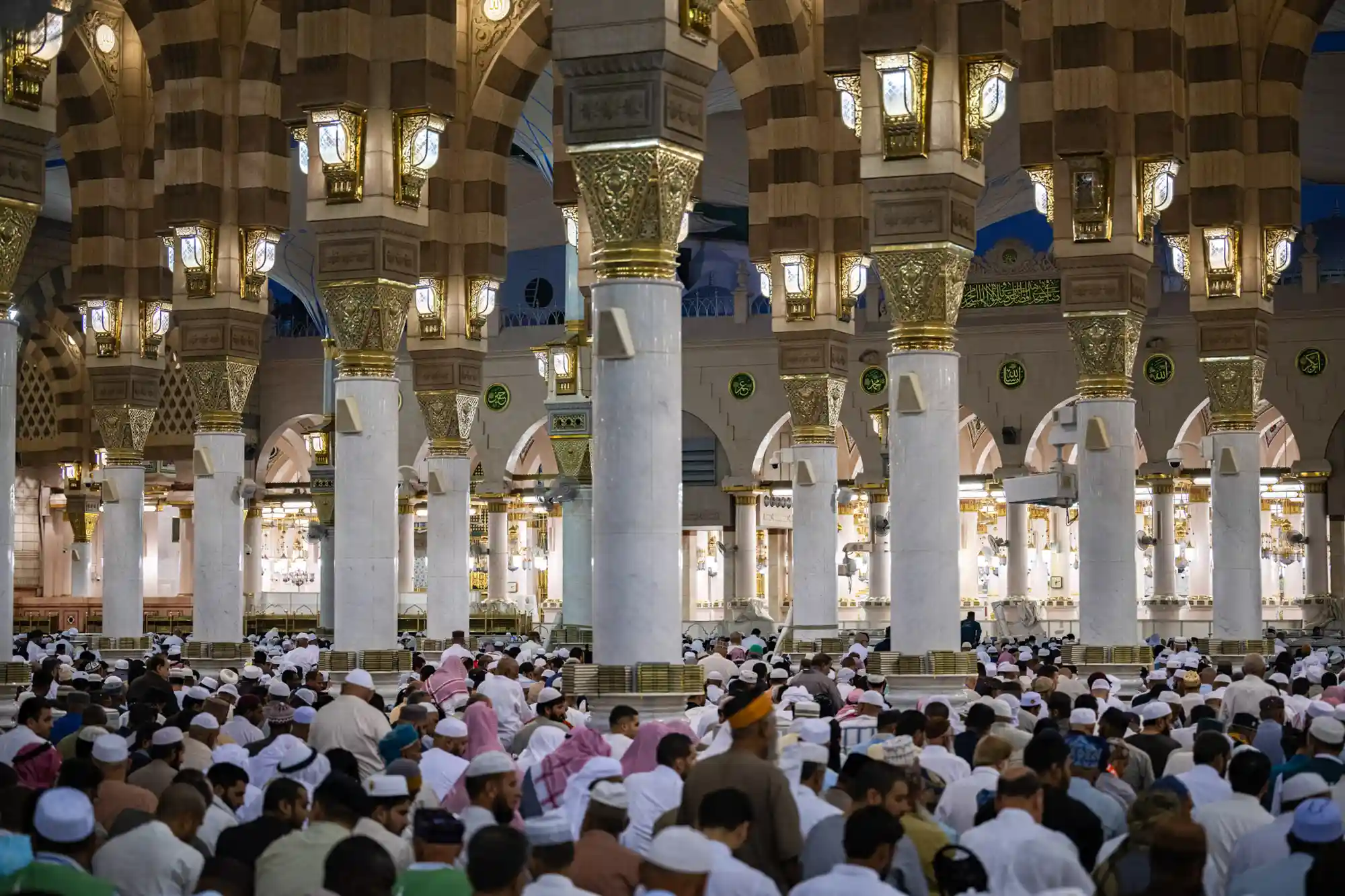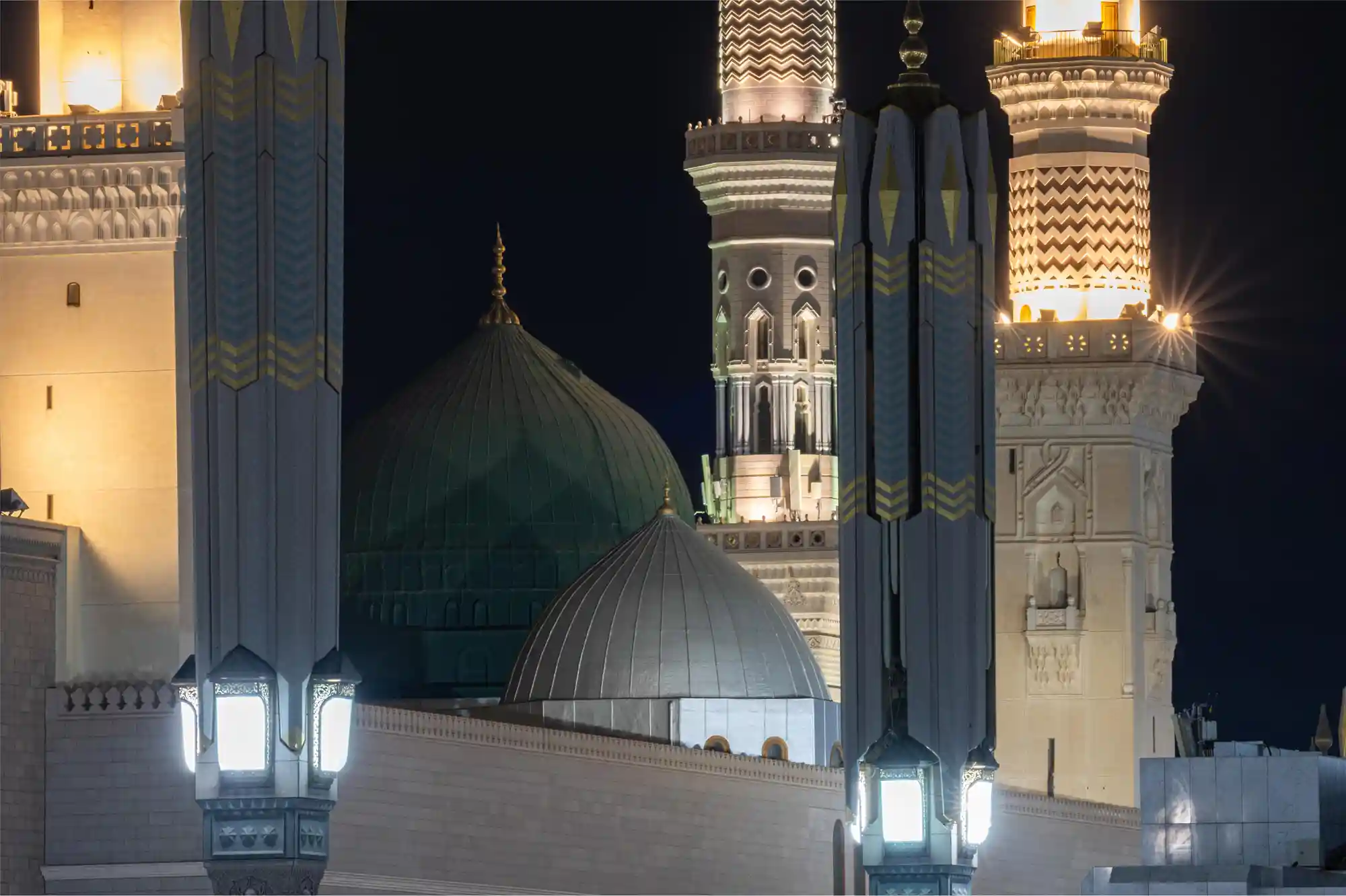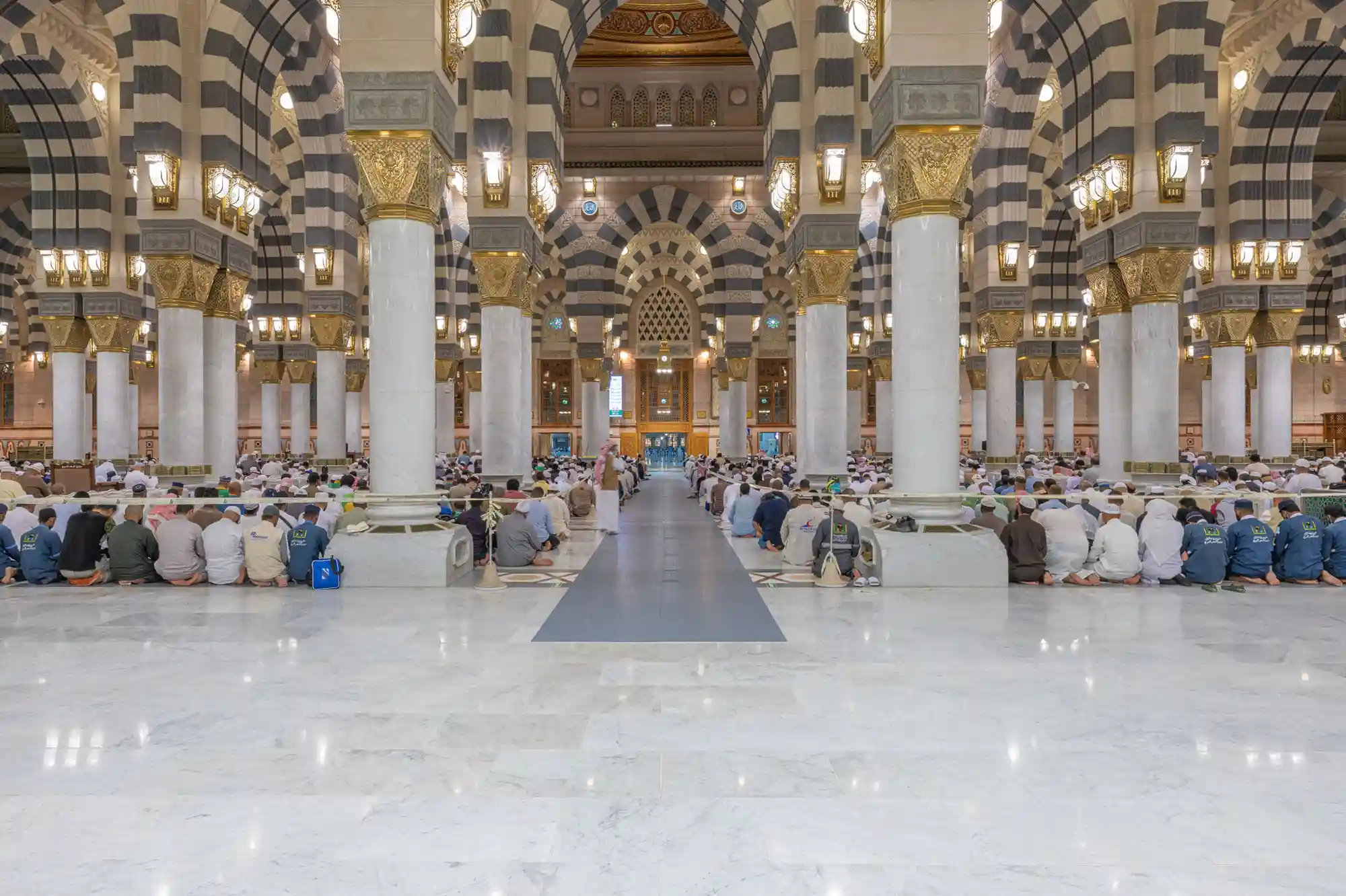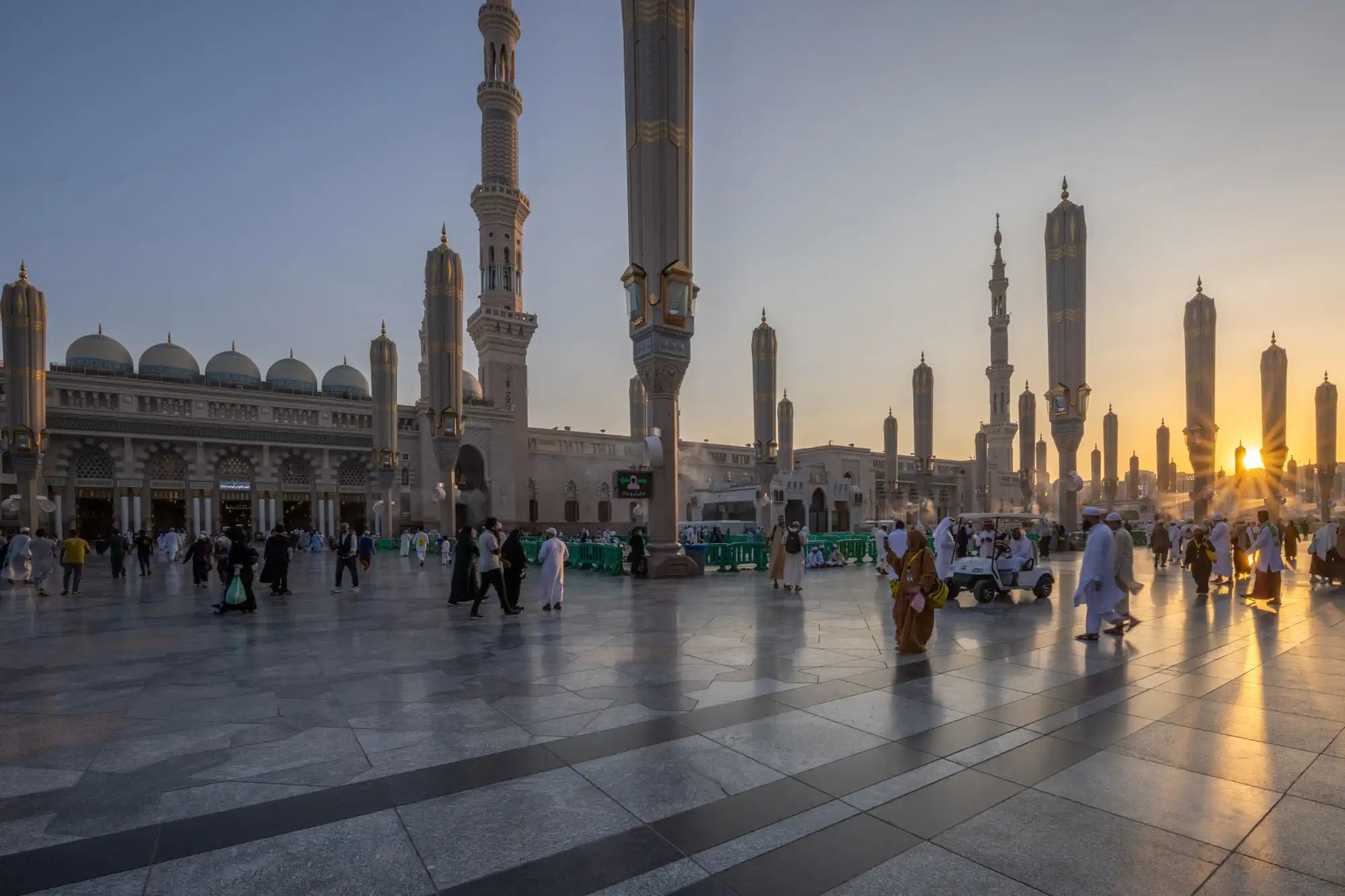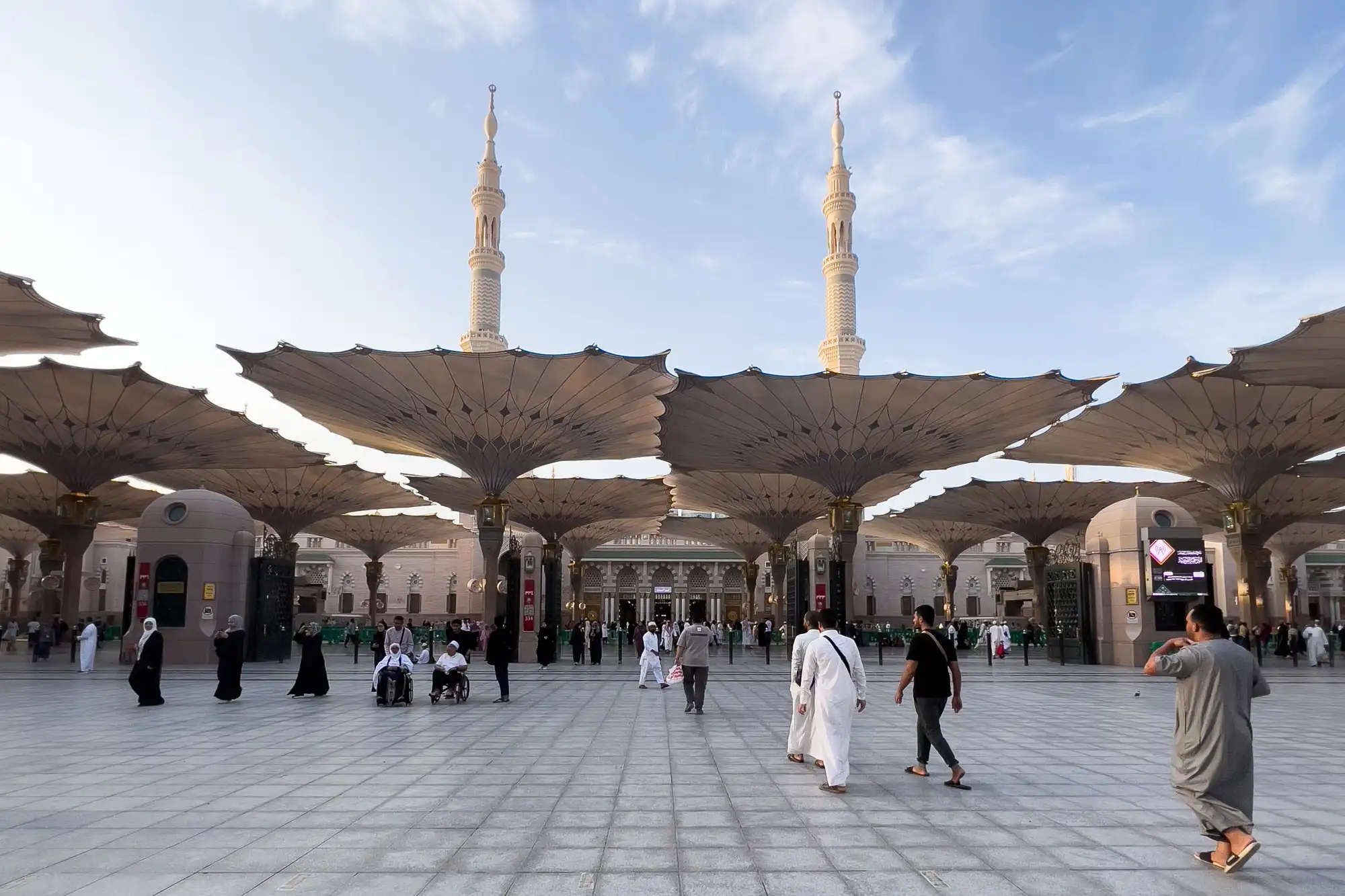Construction and Expansions:
The Messenger of Allah (ﷺ) built his sacred mosque immediately upon arriving in Madinah as an emigrant from Makkah. He had stopped at Quba and built Quba Mosque. The Prophet's Mosque witnessed several expansions throughout history. The first expansion took place during the life of the Prophet (ﷺ) in the seventh year after hegira. Then, it was expanded during the reign of Umar bin al-Khattab in 17 AH, and during the reign of his successor, Othman bin Affan in 29 AH. Rulers and governors of Madinah under the successive Islamic states showed great interest in serving the mosque. During the reigns of King Abdulaziz bin Abdurrahman Al Saud and his successors, the kings of modern Saudi Arabia, the mosque has witnessed several renovations and expansions, which are the greatest in the history of the Prophet's Mosque.
The Exalted Status of the Prophet’s Mosque:
A prayer in this mosque is equal in reward to 1,000 prayers elsewhere. One of the three mosquesto which it is permissible to travel for the exclusive purpose of worship. It embraces many historical and monumental sites mentioned in the Prophet's biography. Landmarks of the Prophet's Mosque:
The Blessed Rawdah: It is located at the front of the Prophet's Mosque, and extends from the house of the Messenger of Allah (ﷺ) to his pulpit. The Prophet's Prayer Niche: The place where the Prophet (ﷺ) used to pray. The current mihrab (prayer niche) dates back to 888 AH. It was last renovated during the reign of King Fahd in 1404 AH. The Prophet's Pulpit: It is located to the west of the Prophet's mihrab, and it has been replaced many times. Additionally, the existing minbar (pulpit), which consists of 12 steps, dates back to 998 AH. The Blessed Chamber: It is the house of the Prophet (ﷺ) where he lived with Aisha, (RA). In this room, the Prophet (ﷺ) and his companions, Abu Bakr and Omar, (RA), were buried. The chamber was attached to the Prophet’s Mosque during the reign of Caliph Al-Walid bin Abdulmalik. As-Suffah (the hospice): an enclosure behind ar-Rawdah, where poor emigrants took shelter. The Prophet left it roofed after shifting the qiblah. The columns: These are the pillars on which the roof of the Rawdah rests. During the Prophet's lifetime, they were made of palm trunks. Each pillar is linked to specific historical events. Care for the Mosque in the Saudi Era:
The first expansion of the Prophet's Mosque was initiated during the reign of King Abdulaziz, and several expansions, including new additions, followed during the reigns of his successors. During the reign of King Fahd, a massive expansion was implemented in the duration (1406AH-1414AH). The total area of the mosque soared to 400,327 square meters, including the courtyards. Quality facilities were built, the most important of which are the underground parking lots beneath the outer courtyards and an air conditioning station. During the reign of King Abdullah, the foundation stone of a huge new expansion was laid in 1433 AH. The Prophet’s Mosque receives the attention of the Custodian of the Two Holy Mosques, King Salman, as he has affirmed his keenness to continue work on the Prophet’s Mosque grand expansion and its related projects. Etiquette of Visiting the Prophet’s Mosque:
To perform ablution or bathe and apply perfume before entering, and to walk politely and solemnly. To enter with the right foot first, saying: "Oh Allah! Open the doors of your mercy for me." To pray the mosque greeting two rak'ahs, and to engage in lots of supplication, remembrance and reading the Qur'an. To visit the blessed chamber and pray there. To visit the tomb of the Prophet (ﷺ) and those of his two companions. Opening Hours:
The Prophet's Mosque is open to visitors and worshippers 24 hours a day, 365 days a year.
